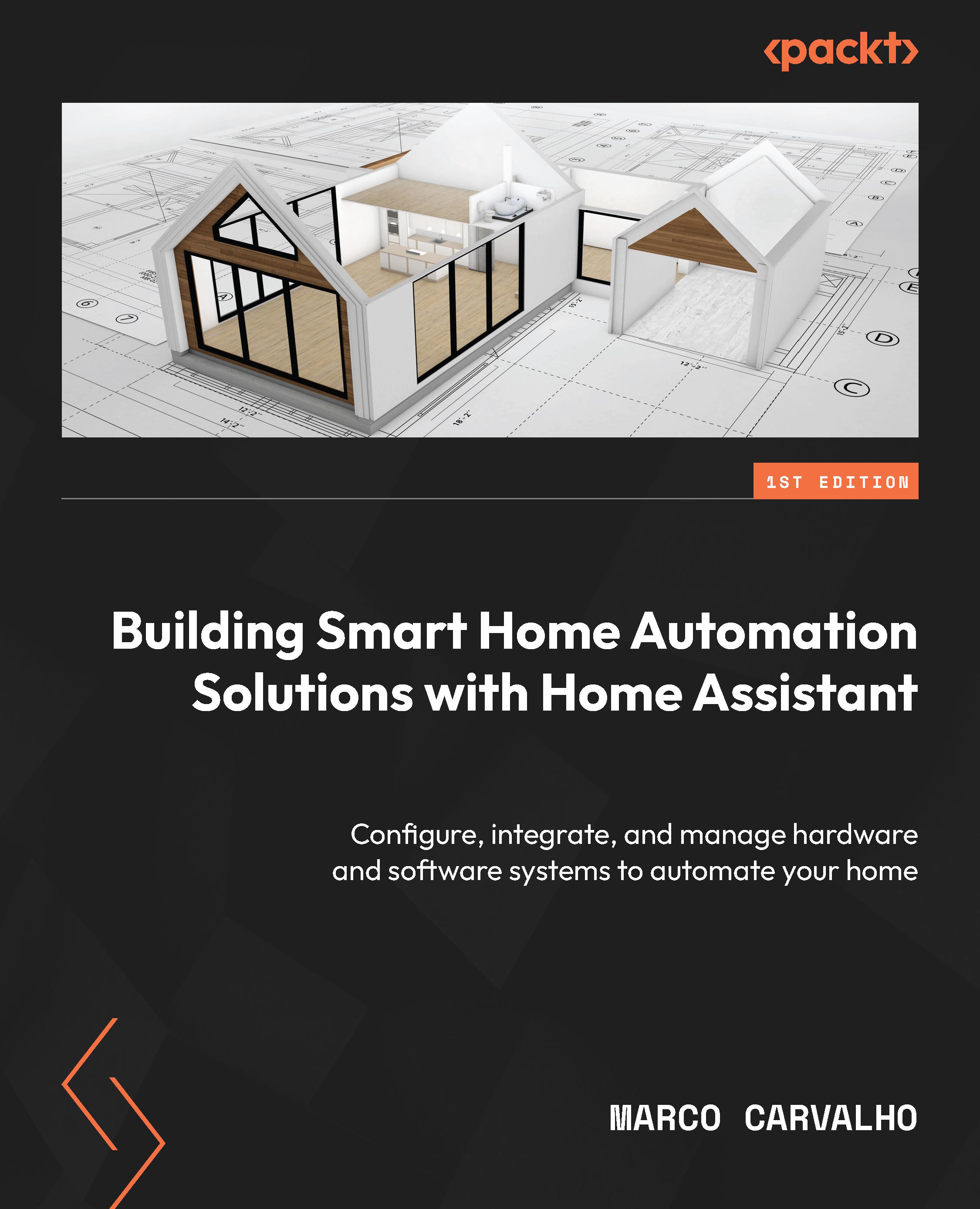To get the most out of this book
To better follow the content of the book, you should have some prior basic knowledge of electronic systems, including soldering and hardware assembly skills. You also should be familiar with software deployment and programming logic. The configuration and other home Assistant files are provided in YAML code.
To build your own minimum automation system using Home Assistant, besides the sensor and actuators that you can buy off the shelf in the market, you will need a Single-Board Computer (SBC) at least. The book uses Raspberry Pi 4 with 4 GB of RAM. Please check in the book what other hardware resources can be used.
The Home Assistant version used in the book varies since it started to be written in November 2022 when was installed the available version which was the 9.3. Along the book, I updated the Home Assistant and now in August 2023 it is in the 2023.8.0. Also the Tasmota version used when the book started to be written was the 12.3.1.3. As I’m writing this part of the book, Tasmota is in its 13.0.0 version. All these changes in versions and releases could imply in differences in the menus, command sequences, button names, and screen names, from what is presented in the book. I tried to overcome this issue by providing different options to access configurations in Home Assistant and also present screenshots to make easier the navigation in the examples provided across the book. If the example sequence in some chapter is different from what you have in your current Home Assistant installation try to get the idea of what is being introduced in the example and guide yourself in the available options or seek for help about the related subject issue using the resources area in Chapter 11.
|
Software/hardware covered in the book |
Operating system requirements |
|
Raspberry Pi 4 |
Home Assistant Operating System (HAOS) |
|
ESP8266, ESP32 |
Raspberry Pi OS, Docker, Home Assistant Container |
|
Home Assistant, Node-RED, InfluxDB, Grafana, TasmoAdmin, Duck DNS, Tasmota, WLED |
When making changes to the electronics and installing the software, make sure you know what you are doing and follow the instructions in the book. In some situations, you will need to install software in plugs. Do not install them while connected to the outlet. There is an electric shock hazard. Do not install Sonoff actuators in outlets if you’ve never done it before. Call an electrician instead.
Install Home Assistant, Tasmota, and any other software installation mentioned in this book at your own risk. The author will not take any responsibility for any lost factory software not previously backed up before the installation of the software in this book.
If you are using the digital version of this book, we advise you to type the code yourself or access the code from the book’s GitHub repository (a link is available in the next section). Doing so will help you avoid any potential errors related to the copying and pasting of code.



























































